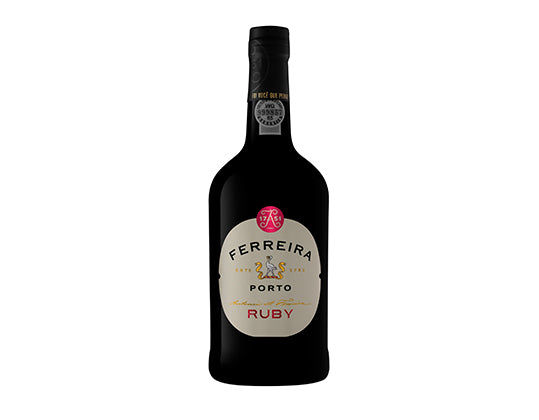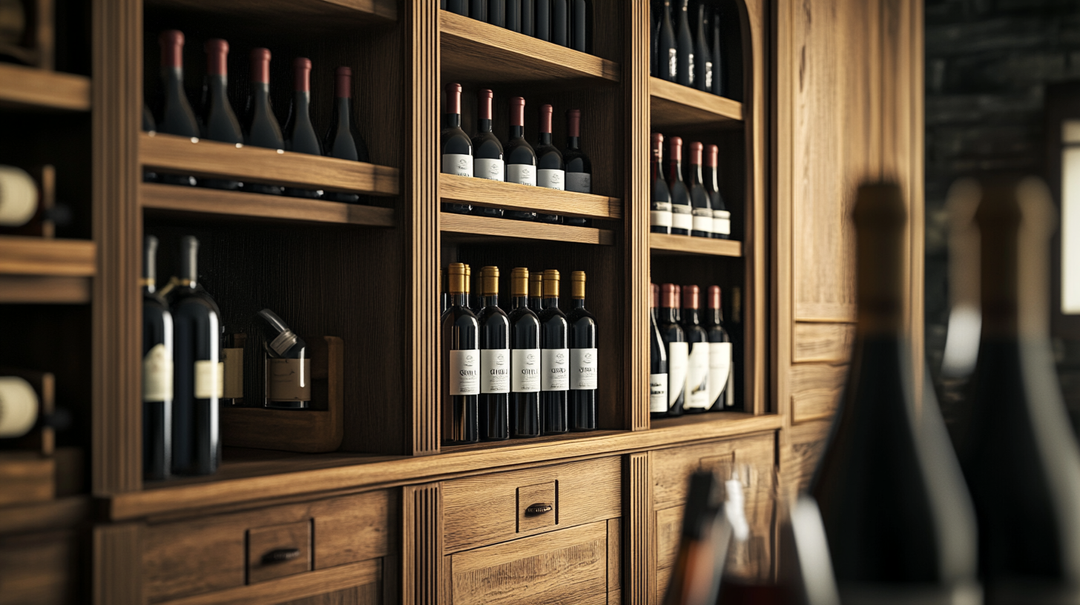The Best Wines to Enjoy in Autumn: Pairing Flavors with the Seasons
Autumn is a transitional season. As the hot summer days give way to cooler temperatures and landscapes turn to earthy tones of yellow, red, and brown, our palates also begin to change. The freshness of chilled drinks and light summer meals makes room for more robust and comforting flavors that match the cozy atmosphere of the season. For wine lovers, autumn is an invitation to explore labels that balance freshness and complexity, reflecting the nuances of this time of year.
Here are some specific types of wines recommended for this time:
White Wines
Beyra Riesling

Aroma very intense and mineral, with citrus notes balanced by floral touches of roses. On the palate, it has great volume, with citrus notes marked by vibrant acidity and salinity. The finish is persistent, very fresh, and long.
Coragem Chardonnay

Chardonnay needs no introduction. It is one of the most cultivated grapes and produces some of the best wines in the world. Our Chardonnay, influenced by the nearby Atlantic Ocean, stands out for its exuberant freshness, which harmonizes with the silky texture typical of the variety. Floral and citrus notes blend with a discreet touch of French oak. It should not be consumed extremely cold!
Rosé Wines
Cepa Divisa Tempranillo Rosé

A medium rosé with notes of strawberry jam, apricot, and lemon.
Ticket Cinsault and Syrah Rosé

The Ticket Cinsault and Syrah Rosé is a delightful French wine that captures the essence of sun-drenched vineyards and the art of traditional winemaking. This rosé is a delicious blend of two classic grape varieties: Cinsault and Syrah, grown in the picturesque wine regions of southern France.
Red Wines
Ticket Merlot & Cabernet Sauvignon

When the bottle of Ticket Merlot and Cabernet is opened, it awakens the senses with a seductive bouquet of dark cherries and blackberries, intertwined with subtle notes of mocha and a soft touch of cedar, creating a captivating tasting experience.
Vidigueira Syrah

A highly concentrated violet color. Aroma of wild berries with mint notes. On the palate, it presents great complexity with touches of dark chocolate and vanilla. The finish is long, fresh, and very persistent.
The Transition of Wines: From Summer to Autumn
In summer, light and refreshing white wines like Sauvignon Blanc and delicate rosés predominate, but autumn calls for something a bit fuller-bodied. While it may not be the time to open those intense, tannic reds of winter, the ideal autumn wines balance body and acidity, providing a sense of warmth without overwhelming the palate.
Full-bodied White Wines for Autumn
For those who still enjoy white wines during autumn, a great option is fuller-bodied and structured whites. Grapes like Chardonnay, especially those aged in oak, provide a richer, creamier texture with touches of vanilla and spices that are perfect for this time of year. Viognier is also an excellent choice, with its floral aromas and notes of ripe fruit like apricot and peach, offering an aromatic and enveloping experience.
Structured Rosés: The Versatility of the Middle Ground
Rosé, primarily associated with summer, can continue to shine in autumn, especially in more structured versions. Rosés made from Grenache and Syrah grapes, which have more body and intense color, are perfect for accompanying slightly more substantial meals. They pair well with dishes like quiches, salads with cured cheeses, and even light roasts, while maintaining the freshness that rosé brings to the table.
Light and Medium Reds for Cooler Days
As autumn progresses and temperatures drop, red wines start to gain more prominence. However, instead of heavy and robust reds, it is ideal to opt for light to medium-bodied wines that still maintain refreshing acidity. Grapes like Pinot Noir, Gamay (used in Beaujolais), and Barbera are excellent choices. Pinot Noir, with its aromas of red fruits, mushrooms, and a hint of earthiness, harmonizes well with autumn's flavor palette, such as mushrooms, game meats, and roasted root vegetables.
Fuller-bodied Reds for Cold Nights
On colder autumn days, when the wind starts to blow stronger and the nights call for a blanket and a good book, fuller-bodied but still balanced wines begin to stand out. Merlot is a classic choice, with its soft tannins and notes of plum, cherry, and chocolate. Another great wine is Zinfandel, which brings rich flavors of black fruits, spices, and a smoky touch, ideal for accompanying dishes like roasted meats, stews, or even a good cured cheese.
Autumn Pairings
Autumn cuisine celebrates heartier and earthier ingredients: mushrooms, pumpkins, root vegetables, game meats, and warm spices like cinnamon, nutmeg, and cloves. The wines that best accompany these dishes are those that can highlight these notes without overpowering the flavors. A Pinot Noir pairs excellently with mushrooms and pumpkin-based dishes, while a buttery Chardonnay perfectly complements poultry, such as chicken or turkey, roasted with fresh herbs.
Finishing the Meal: Dessert Wines
At the end of the meal, dessert wines can also be part of this seasonal experience. A Tawny Port, with its notes of nuts, caramel, and dried fruits, is the perfect choice to close an autumn meal. For those who prefer something a bit less intense, a Sauternes or a late-harvest wine, with its flavors of honey, dried fruits, and a light touch of botrytis, bring elegant sweetness to accompany apple-based desserts, pumpkin pies, or even blue cheeses.
Calories in Autumn Wines
The number of calories in wine varies depending on the type, alcohol content, and residual sugar level present in the drink. Generally, autumn wines, which tend to be fuller-bodied or have a higher alcohol content, also have more calories. Here are some approximate calorie values for different types of wines, based on a 150 ml glass:
1. Red Wines
Medium to full-bodied red wines, common in autumn, have an alcohol content of 12.5% to 14.5%. This directly influences the number of calories:
- Pinot Noir: About 120-125 calories
- Merlot: Approximately 120-125 calories
- Syrah/Shiraz: Between 125-130 calories
- Cabernet Sauvignon: Between 125-130 calories
- Tempranillo: Approximately 125-130 calories
2. White Wines
White wines for autumn are generally fuller-bodied and more complex, with alcohol levels ranging from 12% to 14%. However, white wines tend to be slightly lower in calories than reds:
- Chardonnay (oak-aged): Around 120-125 calories
- Viognier: Approximately 120-125 calories
- Chenin Blanc: About 120 calories
3. Rosé Wines
Rosé wines, though often lighter, can also vary depending on the grape and alcohol content:
- Rosé from Provence: Around 115-120 calories
- Rosé from Cabernet Sauvignon or Syrah: Around 120-125 calories
4. Wines with Residual Sugar (Dessert or Late Harvest Wines)
Late harvest wines or wines with some residual sugar (such as dessert wines) have significantly more calories due to the sugar:
- Late harvest wines: Between 175-200 calories per 150 ml glass.
Autumn Wine Prices
The price of autumn wines can vary significantly depending on the region of production, brand, and wine quality. Here are approximate price ranges in euros (€) for common autumn wines, taking into account good-quality yet affordable wines, as well as premium options.
1. Autumn Red Wines
- Pinot Noir:
- Affordable range (Europe, North America): €10 - €25
- Premium options (Burgundy, France): €30 - €100 or more, depending on denomination and producer.
- Merlot:
- Affordable range (France, Chile, USA): €8 - €20
- Premium options (Pomerol or Saint-Émilion, Bordeaux, France): €30 - €70 or more.
- Syrah/Shiraz:
- Affordable range (France, Australia, South Africa): €10 - €25
- Premium options (Rhône, France or Barossa Valley, Australia): €30 - €60 or more.
- Tempranillo:
- Affordable range (Rioja, Ribera del Duero, Spain): €8 - €20
- Premium options (Rioja Gran Reserva or Ribera del Duero): €25 - €50 or more.
2. Autumn White Wines
- Chardonnay (oak-aged):
- Affordable range (France, California, Chile): €10 - €25
- Premium options (Burgundy, France): €30 - €100 or more.
- Viognier:
- Affordable range (France, Languedoc, Rhône): €10 - €25
- Premium options (Rhône, Condrieu): €30 - €70 or more.
- Chenin Blanc:
- Affordable range (Loire, France, South Africa): €8 - €20
- Premium options (Vouvray, Loire): €25 - €50 or more.
3. Autumn Rosé Wines
- Rosé from Provence:
- Affordable range (Provence, France): €10 - €20
- Premium options (Côte de Provence, Bandol): €20 - €40 or more.
- Rosé from Rioja:
- Affordable range (Spain): €8 - €15
- Premium options: €20 - €30 or more.
- Tavel (France):
- Affordable range (Rhône, France): €12 - €25
- Premium options: €25 - €40.
4. Wines with Residual Sugar (Late Harvest)
- Late harvest wines:
- Affordable range (France, Germany, Austria): €15 - €30
- Premium options (Sauternes, Tokaji, Trockenbeerenauslese): €40 - €100 or more.
Autumn wines are balanced, combining freshness with complexity and body, perfect for pairing with heartier dishes. Full-bodied reds, more structured whites, and deep rosés are ideal for this season, reflecting the earthy and rich flavors typical of the period.










Leave a comment